Step-by-Step Guide to Creating a Local Account on Windows 11

- To set up a local account on Windows 11, navigate to Settings > Accounts > Other users (or Family & other users), click “Add account,” select “I don’t have this person’s sign-in information,” click “Add a user without a Microsoft account,” and then confirm the account details.
- Alternatively, you can create a local account by executing the command “net user USER-NAME PASSWORD /add” in the Command Prompt (admin) or the command “New-LocalUser “NEW-ACCOUNT-NAME” -Password $Password -FullName “USER-FULL-NAME” -Description “DESCRIPTION” in PowerShell (admin).
- You can also create a local account using Computer Management or the legacy User Accounts (netplwiz) settings.
Creating a local account on Windows 11 allows you to avoid using a Microsoft account, meaning your files and settings are kept private and are only accessible on your device.
While setting up with a Microsoft account offers benefits like seamless syncing across devices and integration with various services, you can opt for a more straightforward approach with a local account that does not connect to Microsoft services. This can be done through the Settings app, Computer Management, User Accounts (netplwiz), Command Prompt, or PowerShell.
This guide will guide you through various methods to create a local account on Windows 11.
- Create local account on Windows 11
- Create local account from Computer Management
- Create local account from legacy User Accounts
- Create local account from Command Prompt
- Create local account from PowerShell
Create Local Account on Windows 11
To set up a local account from the Settings app in Windows 11, follow these steps:
-
Open Settings on Windows 11.
-
Click on Accounts.
-
Click the Other users tab.
-
Click the Add account button under the “Other users” section.
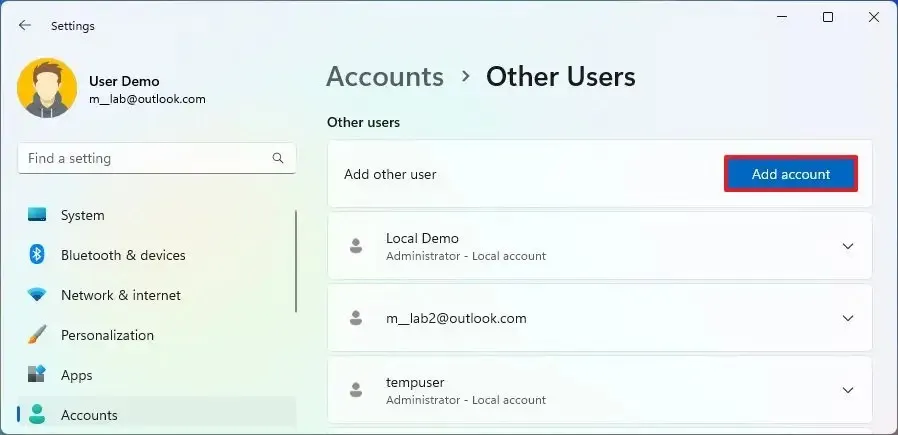
-
Click the “I don’t have this person’s sign-in information” option.

-
Click the “Add a user without a Microsoft account” option.
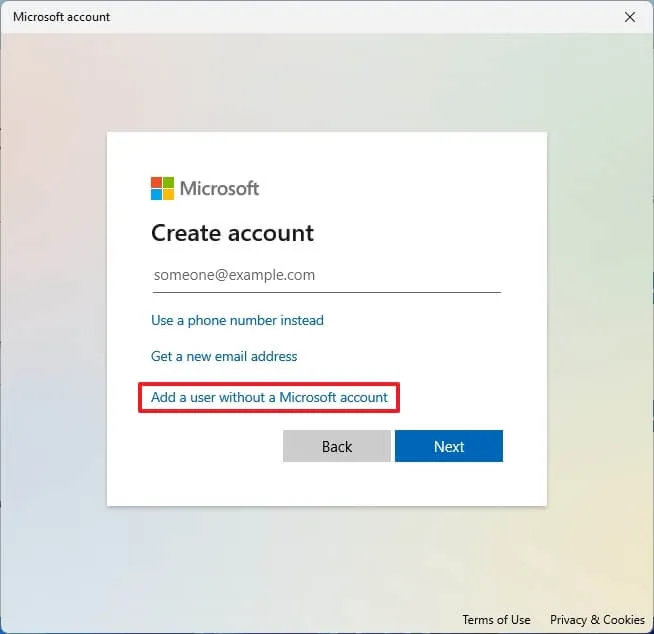
-
Create a Windows 11 local account by confirming a username and password.
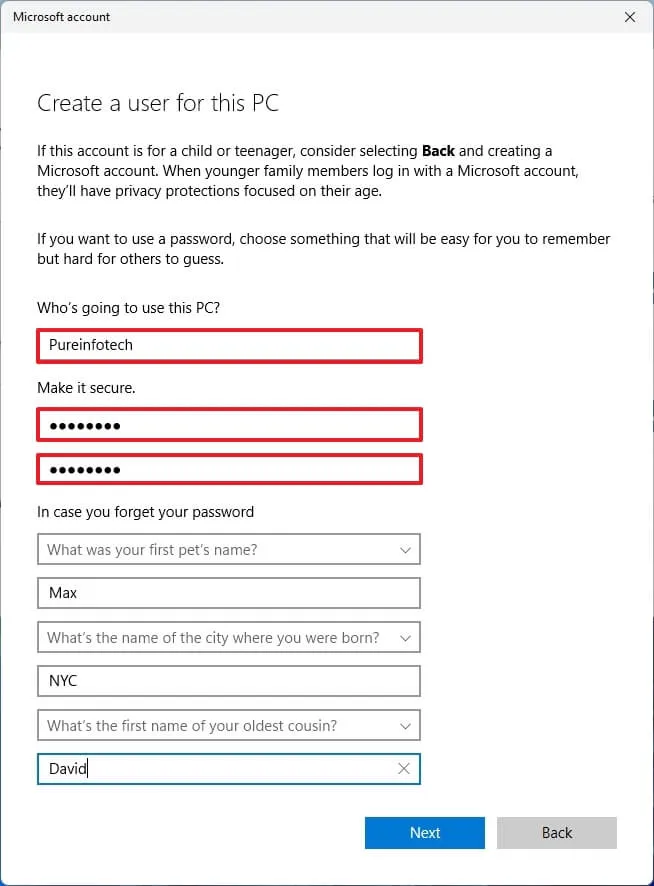
-
Set up security questions for account recovery in case the password is forgotten.
-
Click the Next button.
-
(Optional) Select the newly created account and click the “Change account type” button.

-
Use the “Account type” dropdown menu to select the Administrator option.
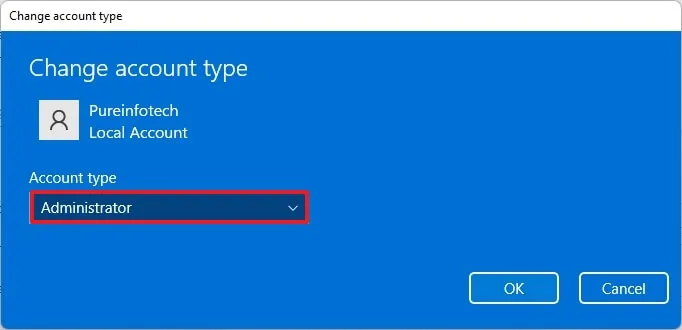
-
Click the OK button.
Once you complete these steps, the new account will be added to Windows 11, allowing the new user to log in as a standard or administrator user, based on the account type settings.
The Settings app is the main method for creating new accounts; you can still access “User Accounts” settings through the Control Panel, though creating a new account will redirect you to the “Other Users” page in the Settings app.
You can also watch these instructions in my video tutorial on my YouTube channel. (Don’t forget to like and subscribe!)
Create Local Account from Computer Management
Another efficient method to create accounts is through the Computer Management app. This method allows you to create a local standard account without the need for security questions, and it speeds up the setup process as adding a new account cleans the interface for further creations.
To create a local account on Windows 11 through Computer Management, follow these steps:
-
Open Start.
-
Search for Computer Management and click the top result to launch the app.
-
Navigate to:
System Tools > Local Users and Groups > Users. -
Right-click on Users and choose the New User option.

-
Confirm the account name in the “User name” field. You can also specify a full name in the optional “Full name” field.
-
Create and confirm a password.
-
(Optional) Clear the “User must change password at next logon” option.
-
Click the Create button.
-
You can continue creating additional accounts or click the Close button.
-
(Optional) Right-click the newly created account and select the Properties option.
Quick note: By default, new accounts are created as standard users. To grant administrative privileges, follow the additional steps below. -
Click the Member Of tab.
-
Click the Add button.

-
Enter “Administrators” in the “Enter the object name to select” field.
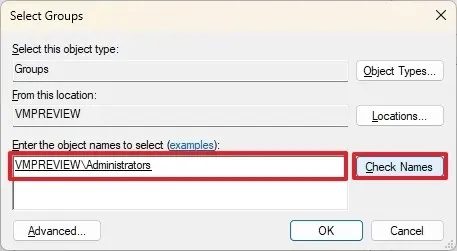
-
Click the Check Name button.
-
Click the OK button to assign administrator rights to the account.
-
Click the Apply button.
-
Click the OK button.
After completing these steps, the new local account without a link to Microsoft services will be established on your computer.
Create Local Account from Legacy User Accounts
You can still create a local account using the legacy User Accounts (netplwiz) settings, by following these steps:
-
Open Start.
-
Search for netplwiz and click the top result to access the User Accounts settings.
-
Click the Add button.
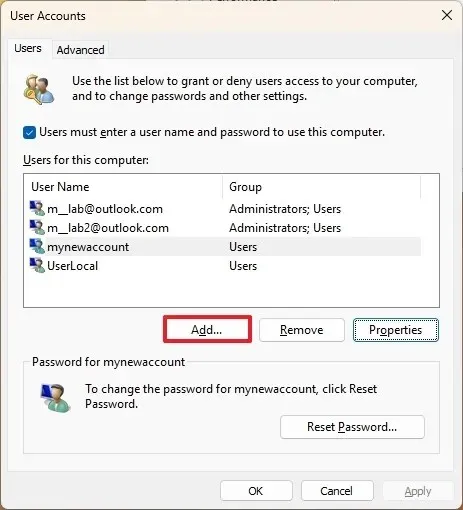
-
Select the “Sign in without a Microsoft account” option.
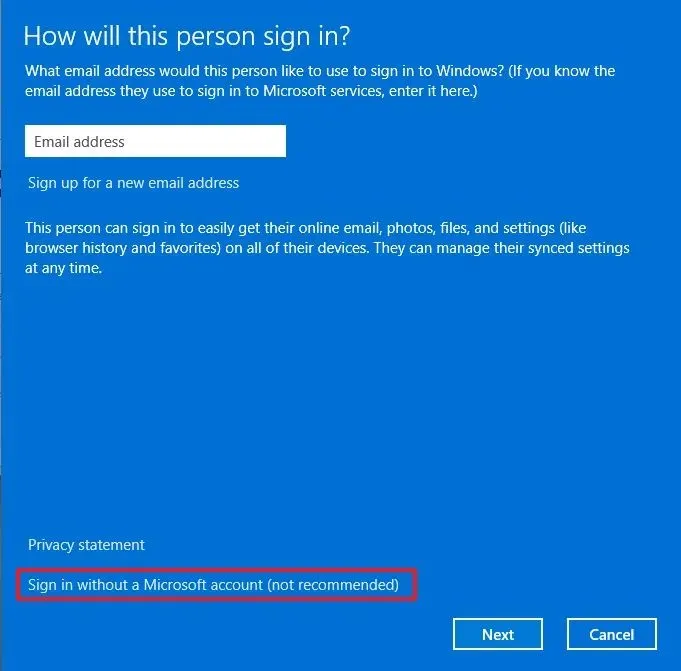
-
Click the Local account button.
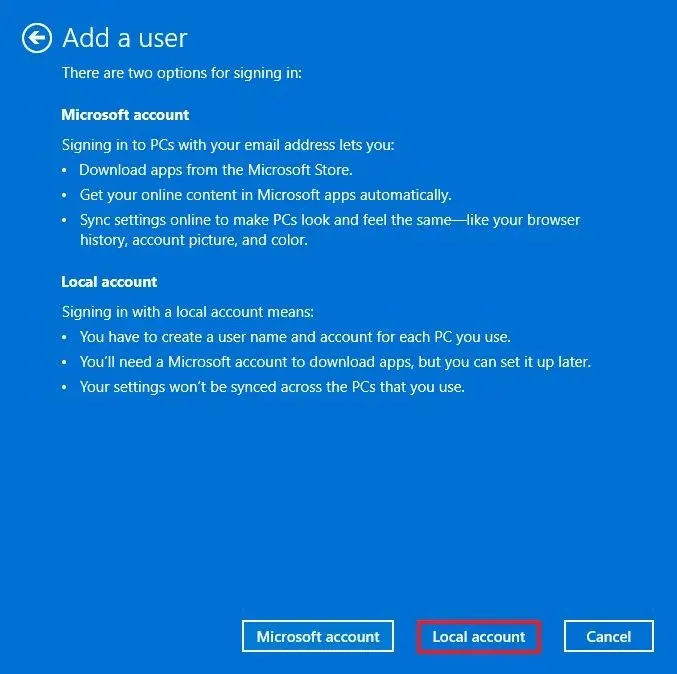
-
Confirm the username in the “User name” field.
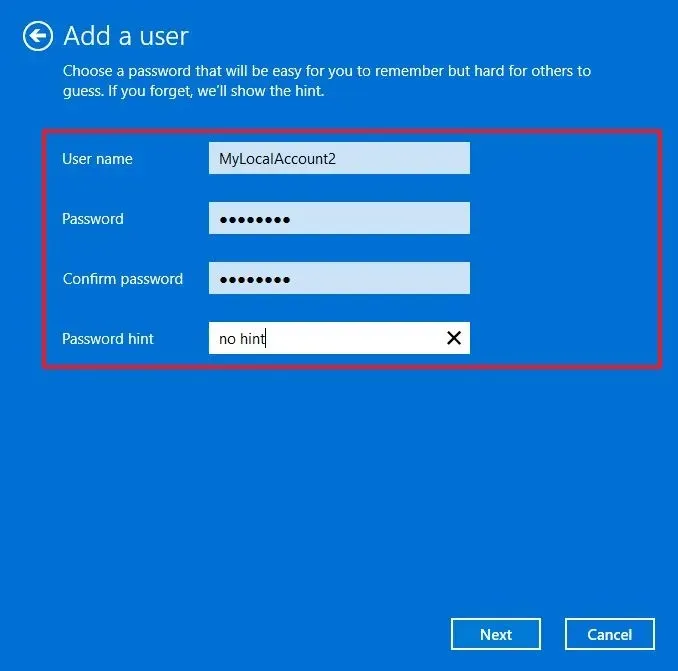
-
Create and confirm a password.
-
Set up a hint in the “Password hint” field to help you remember your password.
-
Click the Next button.
-
Click the Finish button.
-
(Optional) Select the newly created account and press the Properties button.
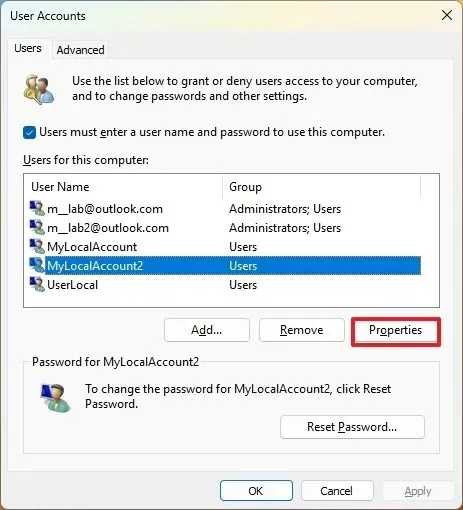 Quick note: New accounts default to standard user status. To grant administrative privileges, follow the steps below.
Quick note: New accounts default to standard user status. To grant administrative privileges, follow the steps below. -
Click the Group Membership tab.
-
Select the Administrator option.
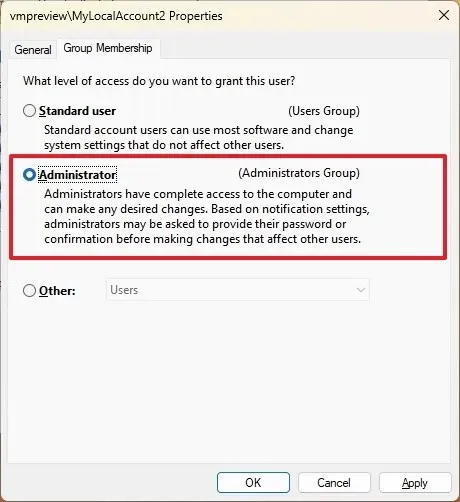
-
Click the Apply button.
-
Click the OK button.
After completing these steps, the local account will be established on Windows 11 and accessible from the Lock Screen.
Create Local Account from Command Prompt
If you’re comfortable typing commands, using Command Prompt is a quick way to create and manage accounts.
To create a local standard or administrator account on Windows 11 using Command Prompt, follow these steps:
-
Open Start.
-
Search for Command Prompt, right-click the top result, and select the Run as administrator option.
-
Type the following command to create a new account and press Enter:
net user USER-NAME PASSWORD /add
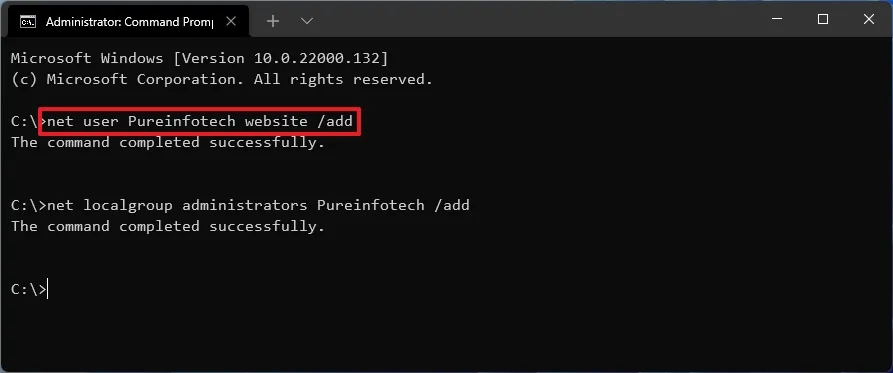
Make sure to replace USER-NAME and PASSWORD with the desired credentials for the new user account.
-
(Optional) Type the following command to add the new account to the “Administrators” group and press Enter:
net localgroup administrators USER-ACCOUNT /addReplace USER-ACCOUNT with the name of the account you want to add to the administrators group.
To check the new account, sign out. You should see the new user account at the bottom left of the login screen. Select the new account and sign in.
Create Local Account from PowerShell
To create an account without a Microsoft account using PowerShell, follow these steps:
-
Open Start.
-
Search for PowerShell, right-click the top result, and select the Run as administrator option.
-
Type the following command to temporarily store the password in the “$Password” variable and press Enter:
$Password = Read-Host -AsSecureString -
Enter the password for the new Windows 11 account and press Enter.
-
Next, type the following command to create a new account and press Enter:
New-LocalUser "NEW-ACCOUNT-NAME"-Password $Password -FullName "USER-FULL-NAME"-Description "DESCRIPTION"
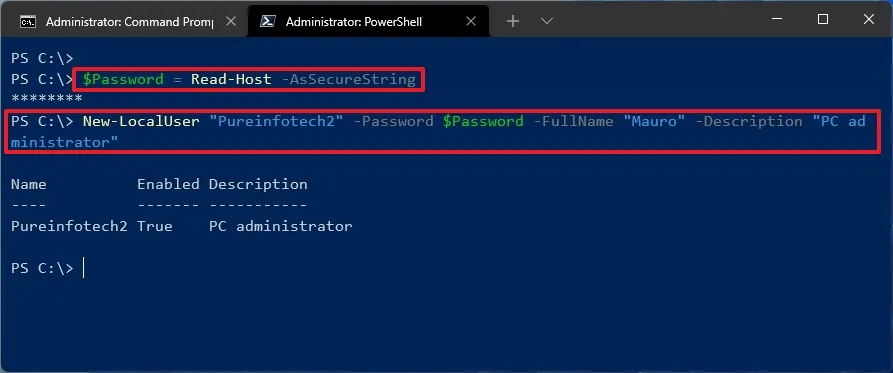
Remember to change NEW-ACCOUNT-NAME to your account’s name, USER-FULL-NAME to the full name of the user, and DESCRIPTION to a desired description for the account.
-
To add the Windows 11 account to the correct user group, type the following command and press Enter:
Add-LocalGroupMember -Group "Administrators"-Member "NEW-ACCOUNT-NAME"

Replace NEW-ACCOUNT-NAME with the name of the new account. This command assigns the account to the Administrators group, granting full device access. For limited access, assign it to the Users group to create a “Standard User.”
Once the steps are complete, the new local account will be available on Windows 11 with the specified administrative privileges.
Update September 20, 2024: This guide has been revised to ensure accuracy and account for changes in the account creation process.


Leave a Reply